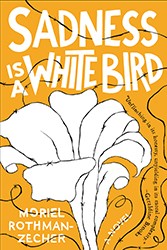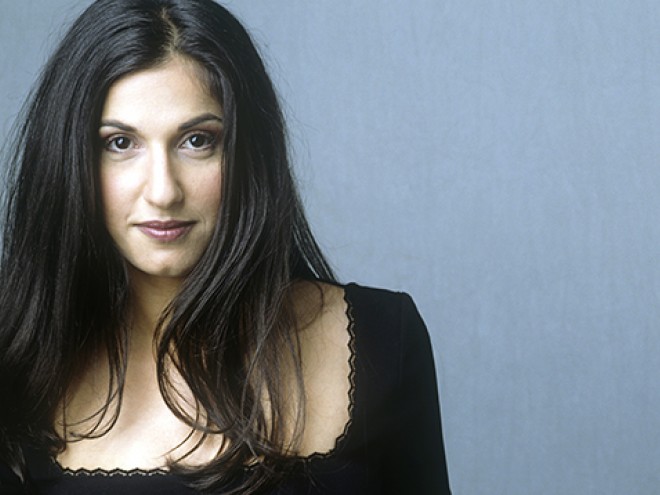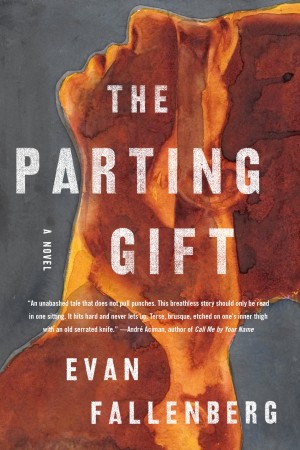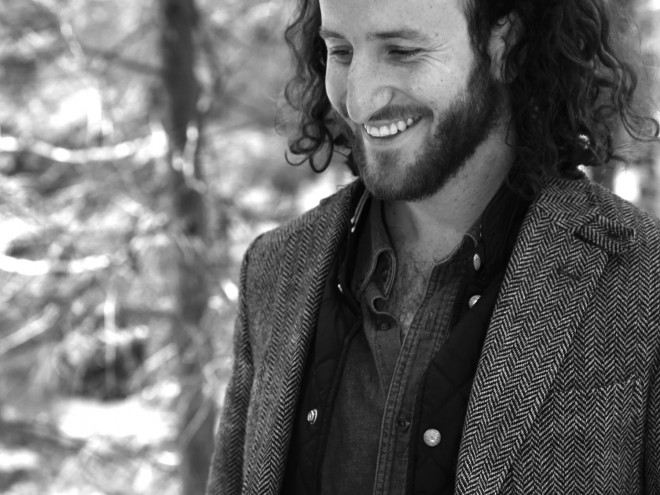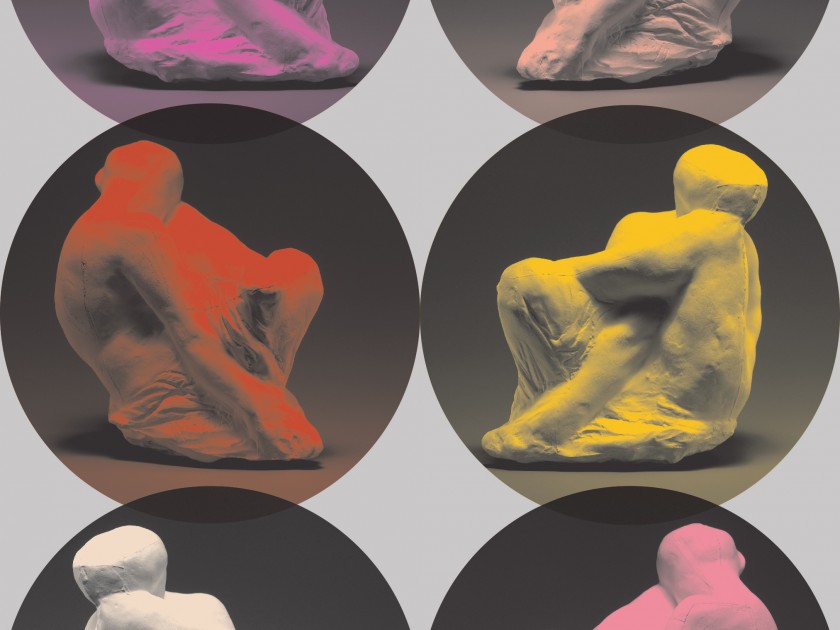
Sculpture: Study for Obsession by Auguste Rodin, ca 1896
At an international gathering of Jewish writers and translators held in 1998, the Israeli playwright Yehoshua Sobol declared, “Our mission as Jews is to open ourselves up and develop a dialogue with other cultures. Cultures, like people, oscillate between the erotic and the neurotic.” He went on to explain that, in this paradigm, “neurotic” suggests a society that is inward-looking, phobic, and closed; whereas “erotic” indicates a porous community, one confident enough to be receptive to different people and cultures. “Erotic cultures are interested in intercourse and exchange, in living metabolically, in the exchange of the spiritual and the material … the quintessence of Jewish culture is eroticism — a lively contact with others.”
Sobol’s confidence in the capacity of Jewishness to thrive most when interacting closely with other cultures is vibrantly reflected in the Israel-centered works of a new literary generation. Three boundary-transgressing novels published this past year explore the seductive promise as well as the bitter limits of coexistence between Jews and Arabs: The Diamond Setter and The Parting Gift by, respectively, the award-winning authors Moshe Sakal and Evan Fallenberg; and Sadness Is a White Bird, a debut by Moriel Rothman-Zecher. The common ground doesn’t end there, as each book also features queer characters whose marginalization seems to stir them to challenge contentious social and political boundaries.
In these works, the spirit of Sobol’s trope of “erotic culture” has literal as well as symbolic force. And yet each writer ultimately pays heed to the reality that abstract ideals like Sobel’s are often hard to fulfill in the Middle East — where collective loyalties, memory, and one’s heritage can only bend so far before reaching the breaking point. How does one bridge the gulf between being enraptured by an alluring “other,” and the reluctance to lose one’s rootedness in community and identity?
Jewish Israeli writers have long explored the figure of the Arab in morally imaginative and politically unsparing ways. Only a few books, however, have featured romantic relationships that span the Jewish – Arab divide, such as A. B. Yehoshua ’s 1977 classic The Lover, Sami Michael’s 1987 A Trumpet In the Wadi, and Dorit Rabinyan’s 2014 All the Rivers. So what has changed? In the current political climate, such portrayals are sometimes construed as too transgressive for the public good. (The Lover, about the relationship between an Arab boy and a Jewish girl, was once required reading in Israeli schools — a scenario that is difficult to imagine had it been published today.) Indeed, Rabinyan’s All the Rivers, which depicts the relationship between a Palestinian man and an Israeli woman, was recently banned from the school curriculum by the Israeli Minsitry of Education — a move that naturally led to soaring sales.
Despite (perhaps because of) recent nationalist crackdowns on free speech and cultural expression, the current generation of Jewish Israeli writers seems more intent than ever on imagining what lies beyond separatist boundaries and identities, and what it might mean for people in Israel to enter into interreligious relationships.
Moshe Sakal’s The Diamond Setter is an intergenerational epic of two families, one Jewish and one Arab, linked by a legendary blue diamond — the “Sabakh.” In storylines that span from 1930s Damascus to contemporary Tel Aviv and Jaffa, Sakal introduces a diverse cast of Jewish and Arab characters whose experiences open a window to the broader Middle East. Displacements of Jews and Arabs are deftly juxtaposed: in the violence of 1948 – 49, an Arab couple loses their Jaffa home and flees to Damascus, while a Jewish couple escaping persecution in Damascus struggles to create a new life in Tel Aviv. Two polyamorous triads (one in the Levant of the 1940s, the other in Jaffa and Tel Aviv in 2011), are challenged by unyielding social and political realities.
Not long after World War II, Layla (a Palestinian who lives in Jaffa) meets Rafael and his wife, Adela (both from Damascus) while vacationing in Lebanon. The Jewish couple becomes enamored with the beautiful young Layla, and soon begins a long-term affair with her. In these characters’ scenes, Sakal illuminates the alluring cosmopolitanism that often prevailed before the establishment of the state of Israel. Interestingly, this lost world also made a profound impression on Yehoshua Sobol. In “Writing for the Jewish Future,” he recalls “a society of people talking a whole cocktail of languages. I discovered people talking Yiddish and Hebrew, German and Rumanian [sic], Russian and Polish. We had Arab neighbors who used to come and sell vegetables, and they would speak Arabic— but they would also speak a kind of broken Yiddish with my grandmother or with my mother in order to sell their merchandise.”
But even as Sakal, too, celebrates this past era in The Diamond Setter, he acknowledges its limitations: although Rafael and Adela both have deep feelings for Layla, Layla is never fully integrated into their relationship, and the social mores of the time dictate that they keep their involvement with her a secret. The affair eventually ends during the violence and turmoil of 1948. The last time the three meet, Adela gives the diamond to Layla for safekeeping.
The difficulties encountered by the novel’s present-day love triad are no less poignant. In 2011, the diamond has passed down to Layla’s grandson Fareed, a young Syrian who manages to cross the Israeli border and travel to Tel Aviv by bus. There, he downloads Grindr, the gay cruising app, which leads him to Honi, an Israeli soldier — as well as Honi’s boyfriend, Tom. In present-day Tel Aviv, the objection to a Jewish couple’s involvement with a Muslim man is more political than social; Honi’s sister casually asks after both Tom and Fareed, demonstrating that the unconventional configuration of their relationship is not as shocking now as it would have been to Rafael and Adela’s contemporaries. But in spite of the giddy sense of liberation he finds in these relationships, and the vibrancy of Jaffa and Tel Aviv, Fareed feels fated to remain Israel’s other (“[T]here’s nothing Israelis fear more than an unarmed Arab. But here I am: An Arab armed only with pen and paper. And that really is a dangerous thing. Far more dangerous than a gun”) and decides he must return to Damascus. In a farewell letter to Tom and Honi, he describes his dread that Israeli security forces may be closing in on him even as he writes. Although the utopian passions of his characters are never fully actualized in the novel, Sakal’s portrayal of nonbinary human sexuality and a not-so-distant Middle East in which Jews and Arabs closely interacted as equals, give the reader some hope that these ideals might one day be realized.
In contrast to Sakal’s well-intentioned characters, the nameless American-born narrator of Evan Fallenberg’s The Parting Gift is a dangerously persuasive sociopath. The novel is framed as a letter to the narrator’s friend from college; at least initially, readers are likely to find themselves convinced by his version of events.
“[T]here’s nothing Israelis fear more than an unarmed Arab. But here I am: An Arab armed only with pen and paper. And that really is a dangerous thing. Far more dangerous than a gun.”
While on an excursion to a seaside agricultural village, the narrator has a chance encounter with Uzi, a rugged spice merchant, which leads to a tempestuous love affair. The more he sees of Uzi’s settled domestic life, the more the narrator seems bent on infiltrating every aspect of it. Soon he has embarked on a quiet struggle to influence and ultimately control Uzi’s business and family affairs. Ignoring the misgivings of his ex-wife, Uzi is delighted by the new love in his life and the narrator’s intense dedication to his wellbeing. All goes well — until Uzi decides to take in a young Arab named Ibrahim as his apprentice. The narrator immediately suspects that Uzi is attracted to Ibrahim. Tormented by the possibility of Uzi’s unfaithfulness, he begins to unravel. (Whether the narrator’s raging jealousy has any basis in fact remains a teasing question for the reader.)
Though a recent arrival to Israel, the narrator quickly grasps the situation of the country’s minority citizens as well as those living in the occupied territories. To his credit, he is a good listener and learns from the Arab workers about their daily humiliations of curfews and checkpoints, and the disproportionate poverty in Israeli Arab communities (he admits their lives have a “Sisyphean quality”). Like the Jewish characters in The Diamond Setter, the narrator has a sexual relationship with an Arab while upholding a “public” front through his domestic relationship with a Jewish man. Yet, though the physical attraction is strong, he (unlike Sakal’s characters) never feels a true sense of kinship, love, or mutuality with an Arab character; at no time do we see him strive to overcome the rigid demarcation of we/them.
At one point, this antihero caustically describes Ibrahim as “a pack animal, a mule, sturdy and blank-faced, with limitless time and zero ambition.” Even after enjoying sex with another employee of Uzi’s, Ziad, the narrator only fleetingly entertains the notion— before dismissing it entirely — that an Arab and a Jew might ever be true equals (an attitude undoubtedly due in part to the fact that he pays the man for sex). There are moments when the narrator seems self-conscious about his new role as an Israeli citizen and realizes that his conversations with Ziad provide “a window into a culture I knew nothing about. On the other hand, staring through that window was painful and ugly. The Palestinians were not my problem … but still, they were everyone’s problem.” But while he is capable of sympathetic observations about the less fortunate, he is ultimately content to remain detached, and he exploits the Arab workers’ vulnerabilities quite ruthlessly in his elaborate revenge scheme. The Parting Gift offers brutal insights into how easy it is to cross the divide from love to something much more dangerous, while also delivering sobering glimpses of the stratification of Israeli society.
The Parting Gift offers brutal insights into how easy it is to cross the divide from love to something much more dangerous, while also delivering sobering glimpses of the stratification of Israeli society.
Considering these novels about encounters between Arabs and Jews, nowhere is identity confusion more apparent than in Moriel Rothman-Zecher’s Sadness Is a White Bird. This coming-of-age story is narrated by Jonathan, a young man who has recently returned to Israel after years of living in the United States. Jonathan is now preparing to serve in the Israeli army. Summers at Zionist camps and awareness of his family’s Holocaust history have primed him to embrace an uncomplicated blue-white patriotism based on duty and conformity. As a new arrival, Jonathan’s social sphere is limited to his Jewish high school friends — until he meets Nimreen and Laith, a twin sister and brother who are Palestinian Israelis. Jonathan and the twins become close friends, arguing good-humoredly about politics and the absurdities of “identity,” smoking pot, and taking weekend trips together. The twins introduce Jonathan to the work of the Palestinian national poet Mahmoud Darwish, whose writing Jonathan finds deeply moving. Jonathan develops romantic feelings for both Nimreen and Laith, and for a time, the three form their own peaceable binational state — until each of the characters begins to confront the stark implications of Jonathan’s impending IDF service.
Even as he begins to appreciate an alternative version to Zionist history and accept the twins’ sense of outrage over Israel’s treatment of the Arab minority and the Palestinians in the West Bank, Jonathan feels the need to defend the state that sheltered the remnants of his family after the Holocaust. Struggling to shore up his wavering sense of purpose, he undertakes a pilgrimage to Salonica, where his grandfather (a tough Palmach veteran) lived before World War II. During his interlude there, Jonathan has a brief affair with a young Jewish man, and even indulges in a fantasy that the youth shares the name of the boyfriend of his grandfather’s brother, exterminated in Auschwitz. Back in Israel, he also dates a female Jewish classmate. Jonathan seems to feel that making romantic connections with other Jews will somehow dispel his growing ambivalence. Yet what is often most striking about Sadness Is a White Bird is just how conflicted Jonathan remains, how difficult it is for him to weave the competing strands of loyalty to his own people and love for others into a cohesive tapestry.
Asked about his character’s refusal to be trapped by either binary sexuality or by choosing one people over another, Rothman-Zecher says that “Jonathan’s relative fluidity — nationally, linguistically, and sexually — is an important part of his individuality.” At the same time, the author perceives this as “a source of danger [that] provides him with a powerful opportunity for self-delusion … [his] narrative throughout much of the story is that as long as he remains fluid and open— friends with Israelis and Palestinians, speaking Arabic and Hebrew, in love with Arab women and Jewish men, and Jewish women and Arab men, he can remain largely sideless, and can ignore the ways in which ‘sidelessness’ does not exist in Israel-Palestine (or, probably, anywhere in the world).” Resisting facile polemics, Rothman-Zecher ultimately asks readers to reach their own conclusions about Jonathan’s quest for “sidelessness”; whether or not his romantic and political yearnings imperil his identity, and whether those yearnings will always be as impossible as they are now.
They also encourage the reader to achieve a greater sense of empathy — a more expansive understanding of just how much the other’s traumatic history often resembles our own.
Indeed, similar questions are implicitly raised in each of these novels. The Diamond Setter, The Parting Gift, and Sadness Is a White Bird are all distinguished by protagonists struggling with multiple attractions and deep connections — libidinal and otherwise — that dare readers to think beyond the dehumanizing entrapments of tribalist borders. While they demonstrate that the binary Sobol draws between the “erotic” and “neurotic” is not easily overcome, they also encourage the reader to achieve a greater sense of empathy — a more expansive understanding of just how much the other’s traumatic history often resembles our own. As Dorit Rabinyan once declared, “art and literature are about a magical appeal to identity and empathy. How an identity in literature is transferred into your own identity so that you care for a fictional stranger so that you get into his skin and wear his gaze. [This] is … an antidote to the armory we are requested to put on. This shield of ignorance and indifference and apathy.”
Ranen Omer-Sherman is the JHFE Endowed Chair in Judaic Studies at the University of Louisville, author of several books and editor of Amos Oz: The Legacy of a Writer in Israel and Beyond.
